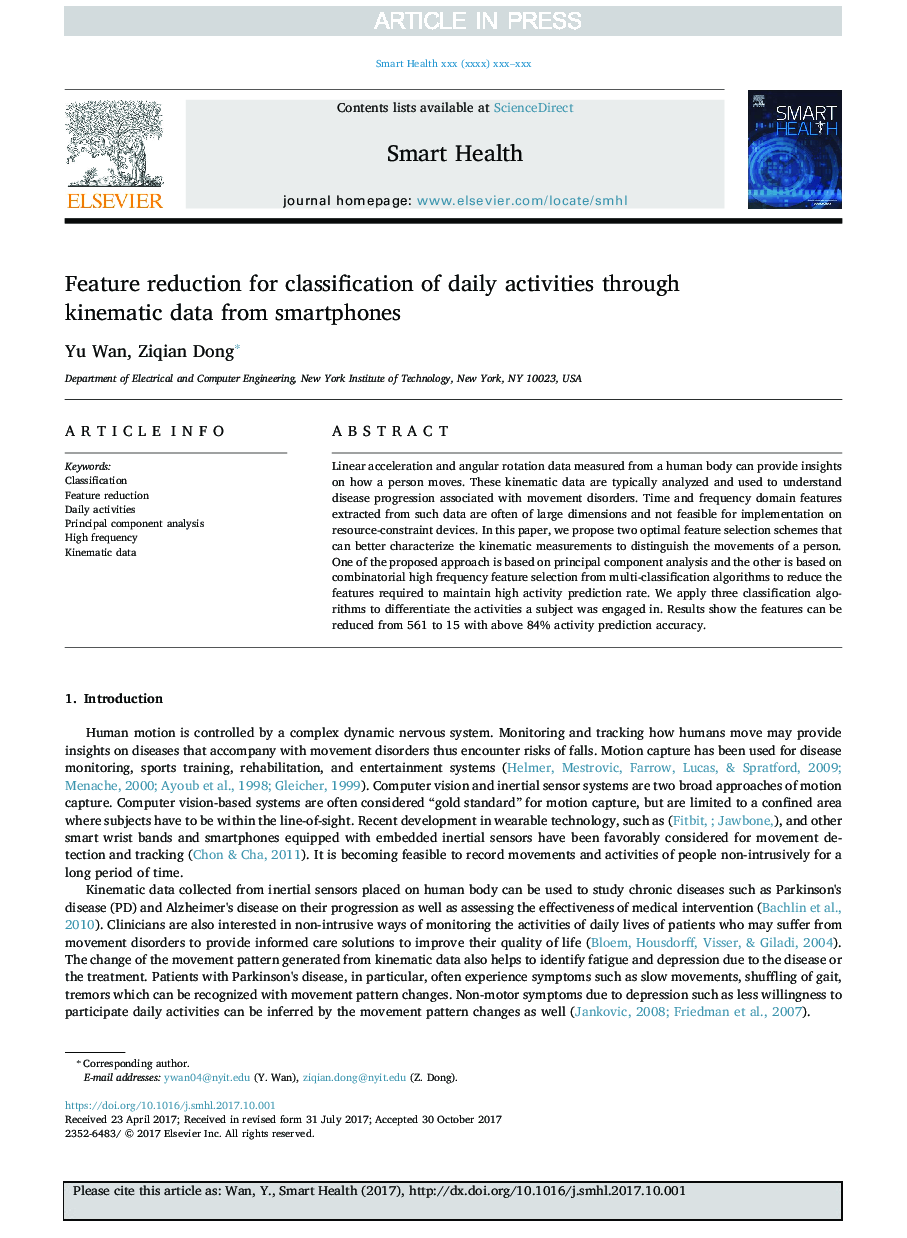| Article ID | Journal | Published Year | Pages | File Type |
|---|---|---|---|---|
| 8917995 | Smart Health | 2018 | 11 Pages |
Abstract
Linear acceleration and angular rotation data measured from a human body can provide insights on how a person moves. These kinematic data are typically analyzed and used to understand disease progression associated with movement disorders. Time and frequency domain features extracted from such data are often of large dimensions and not feasible for implementation on resource-constraint devices. In this paper, we propose two optimal feature selection schemes that can better characterize the kinematic measurements to distinguish the movements of a person. One of the proposed approach is based on principal component analysis and the other is based on combinatorial high frequency feature selection from multi-classification algorithms to reduce the features required to maintain high activity prediction rate. We apply three classification algorithms to differentiate the activities a subject was engaged in. Results show the features can be reduced from 561 to 15 with above 84% activity prediction accuracy.
Keywords
Related Topics
Physical Sciences and Engineering
Computer Science
Computer Networks and Communications
Authors
Yu Wan, Ziqian Dong,
